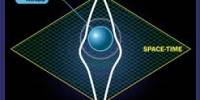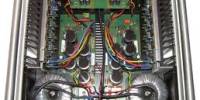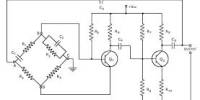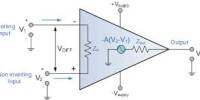Systems made of materials that are merely one or a few atom layers thick have fascinated physicists. These two-dimensional materials can be piled in order to create a geometric pattern known as a moiré pattern. These so-called moiré systems are capable of producing novel, unusual phenomena including superconductivity and unusual magnetism.
Therefore, a deeper comprehension of what transpires at the interface between each sheet to bring about these phenomena could result in exciting applications in innovative electronics as well as many other fields.
An international team of researchers lead by MIT physicists has now reported an effective new method for assessing and regulating a crucial parameter in moiré systems. It entails applying high pressure to a moiré system while shining light through it, and then using Raman spectroscopy, a standard laboratory method, to examine the results.
A theoretical model that offers a context for comprehending the experimental data is equally crucial to the endeavor.
The work is reported in Nature Nanotechnology.
“The technique we developed for probing these moiré systems is methodologically similar to the methods of X-ray crystallography on proteins that allow biologists to know where the atoms are in a protein and how the protein is going to work,” says Riccardo Comin, the Class of 1947 Career Development Assistant Professor of Physics at MIT.
The parameter the team can now measure, known as the moiré potential, “is going to tell us what physics can be realized in a particular stack of two-dimensional materials. It is one of the most important pieces of information that we need for predicting if a given material is going to exhibit any exotic physics, or not,” continues Comin, who is also affiliated with MIT’s Materials Research Laboratory.
The technique we developed for probing these moiré systems is methodologically similar to the methods of X-ray crystallography on proteins that allow biologists to know where the atoms are in a protein and how the protein is going to work.
Professor Riccardo Comin
Additionally crucially, the method enables the group to “tune,” or regulate, the moiré potential to perhaps produce other strange events.
Matthew Yankowitz, an assistant professor of physics at the University of Washington who was not involved in the work, says, “Pressure has recently emerged as a promising technique for tuning the properties of these (moiré) materials because it directly modifies the strength of the moiré potential. By studying the optical properties of a semiconducting moiré bilayer under pressure, the team has unlocked a new means of probing and manipulating the effects of a moiré superlattice. This work lays the foundation for further advances in our understanding and control of the strongly correlated states of matter arising in semiconducting moiré systems.”
The work reported in Nature Nanotechnology is the result of a collaboration between researchers at MIT, Universidad Nacional Autónoma de México (UNAM), and three federal universities in Brazil: Universidade Federal de Minas Gerais (UFMG), Universidade Federal de Ouro Preto (UFOP), and Universidade Federal Fluminense (UFF).
Extreme pressure, miniscule samples
The experimental set-up the researchers designed involves compressing a moiré material between two diamond points. In this case, the substance is made of two ultrathin sheets of a transition metal dichalcogenide. The setup and sample both have extremely small sizes. For example, the diameter of the chamber where this takes place is similar to the width of a human hair.
“And we need to precisely place our two-dimensional sample inside of that, so it’s a bit tricky,” says Martins, leader of the work to develop the setup.
In order to apply the severe pressure on the sample, which is comparable to the pressure the Eiffel Tower would apply if it were placed on top of a one-inch square of paper, those dimensions are required. Another analogy: the pressure is some 50 thousand times the pressure of the air around us.
Experiments and theory
The team then shone light through the sample, and collected the light that was emitted. “The light leaves some energy inside of the material, and this energy can be associated with different things,” Martins said. In this case, the team focused on energy in the form of vibrations. “By measuring the difference between the energies of photons (light particles) coming in and out of the material, we can probe the energy of vibrations created in the material,” he continues.
Accordingly, the strength of the light emanating from the material in response to those vibrations reveals how effectively the electrons in one atomically thin sheet are conversing with the electrons in the other. The stronger those interactions, the better the chance that exotic phenomena will occur.
“The moiré potential is basically the strength of that coupling between the 2D layers,” says Comin.
Says Martins, “By comparing the experimental enhancement of the intensity of the out-going light associated with these vibrations, versus the calculations of our theoretical model, we were able to obtain the strength of the moiré potential and its evolution with pressure.”
The theoretical model, developed by Ruiz-Tijerina, is in itself very sophisticated. Says Comin, “It’s a complex model because it involves atoms, it involves electrons, and it’s a so-called large super cell model. That means you don’t model just a single quantity, like a single atom with its electrons, but a big collection of them. It really looks at the dynamics of the atoms while they’re still interacting with the electrons around them.”
Ruiz-Tijerina concludes, “When the experiment shows what you predicted, or when your model can actually reproduce what the experiments measure, that’s a feeling like no other.”
In addition to Comin, authors of the Nature Nanotechnology paper from MIT are Luiz G. Pimenta Martins, an MIT doctoral student in physics when the work was conducted who is now a postdoctoral fellow at Harvard; Connor A. Occhialini and Qian Song, graduate students in physics; Ji-Hoon Park, a research scientist in the Department of Electrical Engineering and Computer Science (EECS); Ang-Yu Lu, a graduate student in EECS; and Jing Kong, an EECS professor. The author from UNAM is David A. Ruiz-Tijerina. Pedro Venezuela is from UFF; Luiz G. Cancado and Mario S.C. Mazzoni are from UFMG; and Matheus J.S. Matos is from UFOP. Martins and Ruiz-Tijerina are co-first authors of the work.
















